-
Posts
3,483 -
Joined
-
Last visited
-
Days Won
25
Content Type
Profiles
Forums
Blogs
Gallery
Events
Store
Posts posted by bigjarofwasps
-
-
Cpl White from 1 RIFLES established himself as the best shot in the Army on Friday when he won the Queens Medal in spectacular fashion. Cpl White came from 14 points behind on equal third to clinch the coveted title from Capt Sam Roberts, a fellow Rifleman from 3 RIFLES.
Does anyone know if you wear this medal, with your campaign, etc, medals, or is it a keep sake type affair?
0 -
CALL-UP FOR HERO KILLED IN IRAQ
Published on 02/07/2007
Den Brady, who was killed on duty in IraqDEFENCE chiefs today apologised after sending a recruitment letter to a Barrow soldier killed in Iraq.
The call-up was received by the heartbroken mum of Lance Corporal Dennis Brady.
The 37-year-old medic, known as Den, was killed by a mortar in Basra in October last year.
Ministry of Defence chiefs have now phoned Brenda Brady, of Vulcan Road, to apologise for sending the letter, which asked the reservist to sign up for more service. Outraged Defence Secretary Des Browne has called for an investigation.
The MOD said The Adjutant General Lieutenant General Sir Freddie Viggers personally called Mrs Brady to apologise for the blunder.
Today Mrs Brady told the Evening Mail the situation had “all been sorted”.
The MOD has now also put a recruitment mailshot on hold as the scandal is being investigated. A spokesperson for the MoD said: “We apologise again for any upset this error has caused.
“The Adjutant General Lieutenant General Sir Freddie Viggers has spoken to the mother and apologised and we have stopped our next planned mailshot to ensure this does not happen again.”
Former Alfred Barrow School pupil, L/Cpl Brady was serving in Iraq as a reservist with the Royal Army Medical Corps, having left the regular Army in 2004. He had a long and illustrious career and had served in conflicts and peacekeeping missions in Kosovo, Bosnia, Afghanistan and Croatia.
He was described as professional, selfless, loving and courageous.
An MPs committee report due to be published tomorrow is expected to announce that staffing shortages in the armed forces mean that there are not enough servicemen and women to meet the demands placed on them by military commitments in Iraq and Afghanistan.
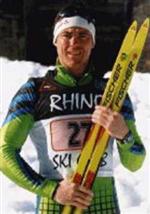
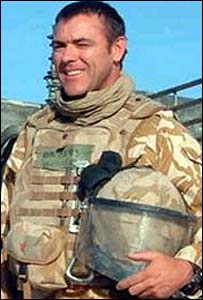

 0
0 -
Third UK soldier killed in Iraq
Soldiers were involved in a large-scale operation in Basra
Three British soldiers have died in two days following a major operation against insurgents in southern Iraq
0 -
Rifleman Edward Vakabua, 23, died following an accident at a military base in the city on 6 July.
Rifleman Edward Vakabua
Rifleman Vakabua, a Fijian national from Suva serving in Mortar Platoon attached to 7 Platoon, B Company, died at the Basra Palace base.
The Ministry of Defence has not given any details of the accident, but said an investigation had begun.
Rifleman Edward Vakabua was a "shy and pleasant" character, a spokesman said.
http://news.bbc.co.uk/1/hi/uk/3847051.stm

 0
0 -
Lance Corporal Ryan Francis, 23, of 2nd Battalion The Royal Welsh, from Llanelli, south Wales, was killed in Basra on 7 July when his Warrior armoured vehicle was hit by a bomb.
Lance Corporal Ryan Francis
The soldier died in fighting involving 1,000 troops who faced machine gun fire and rocket-propelled grenades as British forces launched an operation targeting groups thought to be behind recent attacks.
Lt Col James Swift, commanding officer of the battalion said he was a "professional, brave and committed soldier who was the heart and soul of his platoon".
A second soldier who was seriously injured in the heavy fighting in Basra died from his wounds on Saturday. He has not been named but he is from 3 Regiment Royal Military Police.
http://news.bbc.co.uk/1/hi/uk/3847051.stm
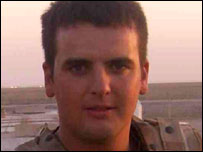
 0
0 -
Found this, thought it might be of interest.......
http://coins.about.com/od/goldrarecoininve..._coin_fraud.htm
0 -
-
A British soldier died on 7 July during an operation in Basra involving 1,000 troops.
The dead soldier - in a Warrior vehicle patrol in the Tuninah district - was hit by an improvised explosive device.
Three other soldiers were injured in separate incidents during the operation targeting individuals suspected of other attacks.
On 6 July, a soldier from 4th Battalion The Rifles died in an accident at the Basra Palace base. The Ministry of Defence said an investigation into the incident is ongoing.
Two British soldiers die in Iraq
Evidence of the clashes could be seen in the morning
Two British soldiers have died in separate incidents in southern Iraq, the MoD said.
One soldier died during fighting in Basra which involved 1,000 troops, the other died in an accident at a British base in the city.
The UK deaths come as a bomb attack in northern Iraq killed 105 people.
The soldier who died in the fighting in Basra was in a Warrior vehicle patrol in the Tuninah district which was hit by an improvised explosive device.
The fatal accident involving the second soldier, who was from the 4th Battalion the Rifles, took place at the Basra Palace base on Friday.
Field hospital
In the fighting in Basra, troops faced machine gun fire and rocket-propelled grenades as British forces launched an operation targeting groups thought to be behind recent attacks.
The operation was the largest of its kind to be carried out in Basra this year, said UK military spokesman Major David Gell.
Its focus was individuals thought responsible for attacks on the Iraqi Provincial Joint Co-ordination Centre in the city, home to both Iraqi security forces and multi-national forces.
A number of locations were searched and arrests made, Major Gell said.
The soldier killed in fighting was on patrol just after midnight local time. Next of kin have yet to be informed.
Three soldiers are being treated at the British field hospital in Basra after unrelated incidents during the operation.
One soldier suffered serious injuries and another minor injury from small arms fire, and a further member of the armed forces was injured by an improvised explosive device.
The next of kin of the soldier who died in an accident have been informed.
"An investigation into the incident is ongoing and it would be inappropriate to comment further at this stage," an MoD spokesman said.
Market attack
The blast in northern Iraq destroyed the market in the small town of Amirli, killing many people instantly and trapping dozens.
It was the most deadly single attack in Iraq since April, correspondents say.
It came as 29 people were killed in separate violence, including 22 who died overnight in Diyala province when a suicide bomber hit a cafe that was hosting a funeral.
And police said a family of seven sleeping on a Baghdad rooftop died when a mortar hit the building.
The total number of UK troops killed in Iraq since hostilities began in 2003 now stands at 158.
Most of the 5,500 British troops in Iraq are based in Basra
Of those who died, 122 are classed as having been killed in hostile action.
Most of the 5,500 UK troops in Iraq are stationed in Basra.
The bases frequently come under mortar fire from Shiite militants involved in a power-struggle in the city.
The BBC understands all personnel are shortly to be moved to a single base at Basra airport.
It is thought the plan over the next 12 months is to then reduce the number of troops to just 1,500.
0 -
OPERATION Banner draws to a close on July 31, 2007 bringing to an end the British Army’s longest continuously running military campaign. For the past 38 years, the Armed Forces have been immersed in supporting the police in public order and counter terrorism in Northern Ireland.
https://www.armynet.mod.uk/soldier/OPBANNER.pdf
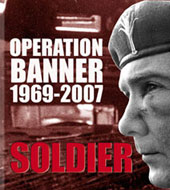
 0
0 -
UK soldier dies in Iraq fighting
A British soldier has been killed and three others wounded in three separate incidents around Basra, the Ministry of Defence has said.
About 1,000 troops are said to have been involved in the fighting.
Soldiers came under attack from machine gun and rocket propelled grenades, and encountered several roadside bombs.
The dead soldier was part of a Warrior vehicle patrol in the Tuninah district of the city, a spokesman said. Next of kin have yet to be informed.
Operations involving searches in the Jumhuriyah district are said to have resulted in a number of arrests.

 0
0 -
Three troops killed in Iraq named
Privates Kerr and Kennedy both served in The Black Watch
The three British soldiers killed by a roadside bomb in the southern Iraqi city of Basra have been named by the Ministry of Defence.
Private Scott Kennedy, 20, Private James [Jamie] Kerr, 20, and Corporal Paul Joszko, 28, died in the attack at about 0100 local time on Thursday.
http://news.bbc.co.uk/1/hi/uk/6250974.stm

 0
0 -
Not just American silver & gold coins it seems...
WTC Ground Zero Recovery 1989 $5 Maple Leaf Canada...Item number: 250136766427
 Krugerrands, Gold Eagles, Maple Leafs, and other bullion coins also been slabbed.
Krugerrands, Gold Eagles, Maple Leafs, and other bullion coins also been slabbed.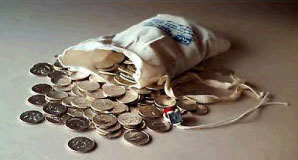
 0
0 -
September 11 was my first day of work in New York after law school and taking the bar exam. I left work and went to Ground Zero. There were a bunch of us who were military and were caught in the city - regulars on leave, reservists and National Guard, from every service and ranging from privates to colonels. We formed teams and joined with the police and fire and other rescue workers. It was initially search and rescue, but pretty quickly came to be search and recovery as there wasn't anyone alive to find. As sad as that was, that is actually a testament to those first responders who gave their lives, because they managed to get out of the area most of the people who could get out before the towers collapsed. Otherwise there could easily have been over 20,000 dead as initially feared.
Dave, that is truely amazing, what a story, to be able to tell you gran kids. Tough first day at work or what!!!!
 Prior to your law training which service were you in? Gordon.
Prior to your law training which service were you in? Gordon.
 0
0 -
Hi Dave,
Yes I`m sure your right, this is obviously a typing error from my source. I`ve been unable to confirm which tower these Iron Mountain Vaults, were underneath, maybe you can shine some light on this. I just assumed, that the vaults were under the WTC in general.
Very interested to hear that you were there!!!! Where/are part of the NY emergancy services, or just some guy who rolled his sleeves up and got stuck in? Either way respect respect respect!!!!!!
Gordon.
0 -
Examples recovered....
1) WTC 1987 Gem Silver Eagle
2) WTC 1987 MS69 Silver Eagle
3) WTC 1989 Gem Silver Eagle
4) WTC 1991 Gem Silver Eagle
5) WTC 1991 MS69 Silver Eagle
6) WTC 1993 Gem Silver Eagle
7) WTC 1993 MS68 Silver Eagle
8) WTC 1993 MS69 Silver Eagle (only 120 exist)
9) WTC 2000 Gem Silver Eagle
10) WTC 2001 Gem Silver Eagle
11) WTC 2001 MS68 Silver Eagle
12) WTC 2001 MS69 Silver Eagle
0 -
Three British soldiers have been killed by a roadside bomb in the southern Iraqi city of Basra and a fourth soldier was also injured.
The explosion happened early in the morning on Thursday in the Al Antahiya district in the south-east of Basra.
0 -
Corporal John Rigby, from Rye, East Sussex, died on his 24th birthday after being injured in a roadside bomb attack in Basra.
Corporal John Rigby was killed by a roadside bomb in Basra
The soldier, from the 4th Battalion The Rifles, was evacuated for medical treatment after the blast hit a British forces patrol returning to base, but died from his injuries.
http://news.bbc.co.uk/1/hi/world/middle_east/6234512.stm
0 -
-
Buried WTC gold returns to futures trade
A fortune in gold trapped for seven weeks in the ruins of the World Trade Center officially returned to the global bullion trade Friday, but dealers had already closed the book on the tale of tragedy and buried treasure.
"You could in theory say that if things had gone much worse since September 11 and there had been rampant demand or something like that, that it might have been a story that affected the price. But at this point, I don't think it really was," said a metals specialist at a large commodity brokerage.
The $230 million in precious metals has been moved from the basement vaults of ScotiaMocatta Depository at 4 WTC, where it was stored on behalf of the New York Mercantile Exchange when the September 11 attacks brought down the twin towers. All warehouse staff got out safely.
In a joint statement Friday, NYBOT and ScotiaMocatta, the metals trading division of Canada's Bank of Nova Scotia, said the metals had been relocated and were again available to guaranty delivery of futures contracts exchange traded at the COMEX metals division of the NYMEX.
"All of the silver, gold, platinum, and palladium stored in its vaults at 4 World Trade Center have been successfully relocated by an Exchange-approved carrier to a newly Exchange-licensed Brink's Inc depository in Brooklyn," they said.
Spurred by authorities who wanted to demolish the building, by the potential for crime, and by whatever has always driven men to hunt for gold, emergency crews dug through the rubble and got a first glimpse of the gleaming booty on Oct 30.
Guarded by a small army of heavily armed federal agents, city policemen and firefighters began the massive task of moving about 12 tonnes of gold and 30 million ounces of silver. The hoard was estimated to be worth at least $230 million.
There were about 3,800 100-Troy-ounce registered gold bars in the underground COMEX warehouse. While gold is very dense, the task of loading the indestructible yellow metal onto armoured Brinks trucks was not nearly as cumbersome as moving the silver.
Experts said it would take some 50 tractor trailers to transport 30,000 1,000-ounce silver bars.
On top of that, it is believed that other treasures were kept in the vaults, including additional precious metals, jewels and securities. But there has been no information on whether these valuables were there or recovered.
ScotiaMocatta has applied to establish a new exchange-licensed depository in New York for silver, gold, platinum and palladium. Upon approval, the metal being held in ScotiaMocatta's custodial account at Brinks will be relocated to this facility, they said.
The NYMEX has another warehouse in Manhattan, operated by HSBC Bank USA.
Despite initial concern among precious metals dealers, the temporary lack of access to the metal hardly caused a ripple in the markets. The buried gold amounted to about 2 per cent of the 600-tonne-a-day global bullion market.
The metal was insured and supply was available from facilities at refiners elsewhere in the United States, though some may have been remelted into the 100-ounce bars of 99.5 per cent pure gold to meet COMEX delivery specifications.
The exchange said it plans to rescind its emergency rules which allowed an individual or firm taking delivery of metal under the terms of a futures contract to reject a warrant -- a document giving title -- for metal on deposit at the buried ScotiaMocatta vault.
0 -
Cache of Gold Found at WTC
Two truckloads retrieved through a tunnel in rubble
By GREG GITTRICH, THOMAS ZAMBITO and LEO STANDORA
Daily News Staff Writers
Workers at Ground Zero unearthed last night [Ed.Com: Oct, 2001] a buried treasure of gold, hidden for weeks under the ruins of the World Trade Center.
As a small army of federal agents with shotguns and automatic rifles stood guard, city cops and firefighters packed two Brink's armored trucks with the lode, sources said.
This is not a shocker, as it was rumored that as much as $160 Billion in bullion was stored under the Trade Center. Let's read on.
The sources said the gold was found in a delivery tunnel under 5 World Trade Center.
(snip)
Officials finally got to the gold through that tunnel yesterday, after workers hauled out a 10-wheel truck, several crushed cars and mounds of debris.
No bodies were recovered during the operation.
(snip)
As workers inched closer to the gold yesterday, authorities began restricting access to the north side of Ground Zero and FBI and Secret Service agents joined cops and firefighters at the site.
(snip)
The Toronto-based Bank of Nova Scotia has said its vault under 4 World Trade Center alone held more than $200 million in gold and silver. Bank spokeswoman Pam Agnew didn't immediately know if any of that gold was found last night.
Other companies are believed to have lost untold gold and valuables in the disaster.
0 -
November 1, 2001
THE VAULT Below Ground Zero, Silver and Gold
By JIM DWYER
About two weeks ago, a security team spotted scorch marks on a basement doorway below 4 World Trade Center, on the east side of the ruined complex, according to officials. Even in a place of mass devastation and death, those scorch marks got fast attention. They had not been noticed by a patrol team a few hours earlier, and behind the damaged — but intact — door were nearly a thousand tons of gold and silver. To security officials, it looked as if someone had tried to break in. Within hours, a video surveillance system was installed to keep at least an electronic eye on the precious metals until their custodian, the Bank of Nova Scotia, had a chance to remove them. That work began this week.
A team of 30 firefighters and police officers are helping to move the metals, a task that can be measured practically down to the flake but that has been rounded off at 379,036 ounces of gold and 29,942,619 ounces of silver.
As layers of debris are peeled away, recovery workers are opening gangways to intact portions of a 16- acre basement that was largely unseen but was a place of spectacular scope in its own right. Just the basement area of the World Trade Center enclosed twice as much space as the entire Empire State Building.
Nearly a quarter of a mile below the spectacular vistas from the towers was their upside-down attic dropping 70 feet below the ground, a strange world with enough room for fortunes in gold and silver, for Godiva chocolates, assault weapons, old furniture, bricks of cocaine, phony taxicabs and Central Intelligence Agency files. With so many people still lost, the owners of this stuff have maintained a discreet silence during the recovery operations. But that doesn't mean they're not interested.
Beneath the Customs House — 6 World Trade Center — was an armada of government vehicles, including dozens owned by the Secret Service, in a fenced-off area. Within that area was a garage where a single armored limousine was parked under the tightest security. The limousine was so long that it needed straight-line access to the street, because it could not clear tight corners in the basement. That car had been used to carry heads of state visiting the city, said Tony Ball, a spokesman for the Secret Service. (The president's limousines are stored in Washington and flown everywhere he visits.)
In the 1993 trade center bombing, an armored Secret Service limousine was parked about 100 feet from a truck bomb. Although the bomb crashed through five stories of concrete and the concussion destroyed cars all over that floor, the Secret Service limousine "did not even have a broken windshield," according to a government official on the scene that day. The condition of the limousine after September's attack was not known yesterday. "We haven't gotten anything back yet," Mr. Ball said.
Asked about reports that his agency also kept what looked like ordinary taxis and telephone company trucks in the basement, Mr. Ball laughed. "What I would say is that it is not unusual for law enforcement agencies to have these kinds of things," he said. Besides the Secret Service, the building named for the United States Customs Service also housed an office of the C.I.A.
That building is now partly collapsed, with a rubble pit 30 feet deep. Somewhere in there are drugs, weapons and contraband seized by the Customs Service at the region's airports. The Bureau of Alcohol, Tobacco and Firearms also lost two evidence vaults, according to a spokesman for that agency, Joseph Green. They have not yet been recovered. "There could be several hundred weapons — somewhere between 200 and 400, ranging from small-caliber semiautomatic pistols to assault rifles," Mr. Green said, adding that a few of the guns had been found. Agents plan to be on the scene when the remains of the building are demolished sometime in the next two weeks, he said. "After that, we'll be working at the landfill to search for any important items that are still missing."
For people who have seen the surface destruction, either in pictures or in person, it may be hard to imagine that anything is intact below ground. But engineers and recovery officials say that large parts of the underground perimeter are undamaged, even though the buildings above them are partly collapsed.
One area is below 4 World Trade Center, where more than two decades ago, Swiss Bank built a huge vault and storage area. The vault was reached from the Swiss Bank offices by a private elevator.
To reach the vaults, armored trucks would drive through what had once been the tunnels for the Hudson and Manhattan railroad, the predecessor of the PATH system. These tunnels had run as far east as Church Street, but were not needed when the trade center was built and the PATH terminal was set closer to the river. The western stubs of the original tunnels, ringed with cast iron, were converted into roadways. These roads ran directly to a roll-down door in front of the Swiss Bank vault area. Inside was a loading dock.
By the time of the 1993 bombing, Swiss Bank no longer was using the vault, and shortly afterward, the bank relocated its remaining operations. The next tenant of the vault space was the Bank of Nova Scotia, which estimated the value of the metals at $200 million.
"We are in the process of relocating the contents of our vault at World Trade Center building No. 4 to another secure location, because authorities need to demolish the building," Pam Agnew, a spokeswoman for the bank, said yesterday by phone from Toronto. Some of the metal is owned by the bank, and some by its customers, she said. She declined to say where the metals were being taken. "The contents remain safe and intact," Ms. Agnew said. "The contents are fully insured. We're working very closely with local authorities to ensure a safe and secure relocation effort. "The removal of the contents was not a priority for us because we've always known it was safe and secure," Ms. Agnew said. Asked about what appeared to be an attempted break-in two weeks ago, Ms. Agnew said that she was unaware of it. Later, she called to reiterate that the metals were safe: "It would be factually incorrect to say there had been any attempt to steal the contents of our vault."
However, a government official involved in the recovery efforts said that there had clearly been an attempt within the last two weeks to enter the vault area. "It looked like they used a blowtorch, a crowbar," said the official, who spoke on the condition that neither his name nor his position be identified. "The Port Authority police began periodic patrols, and then a closed-circuit television system was put in."
The bank also engaged Kroll Inc., a security business based in New York, to supervise the relocation of the gold and silver, a process that began this week, The Daily News reported yesterday. Michael Cherkasky, the president of Kroll, declined to comment on his company's involvement. Anyone trying to make off with the gold would not be able to run very fast: each ingot weighs 70 pounds.
0 -
Closure: The Untold Story of the Ground Zero Recovery Mission
"One of the four Operations Commanders of the World Trade Center site chronicles the rescue and recovery mission at Ground Zero from September 11, 2001, through the end of operations on May 30, 2002, while telling the story of his own struggle to make peace with all that he saw there. On the morning of 9/11, the Port Authority Police Department was the first uniformed service to respond to the attack on the World Trade Center. When the towers collapsed, thirty seven of its officers were killed the largest loss of law enforcement officers in U.S. history. That afternoon, Lieutenant William Keegan began the work of recovery. The FDNY and NYPD had the territory, but Keegan had the map. PA cops could stand on top of six stories of debris and point to where a stairwell had been; they used PATH tunnels to enter "the pile" from underneath. Closure includes many never before told stories, including how Keegan and his officers recovered 1,000 tons of gold and silver from a secret vault to keep the Commodities Exchange from crashing; discovered what appeared to be a black box from one of the planes that hit the towers; and helped raise the inspirational steel beam cross that has become the site's icon. For nine brutal months, the men at Ground Zero wrestled with 1.8 million tons of shattered concrete, twisted steel, body parts, political pressure, and their own grief. Closure tells the unforgettable story of their sacrifice and valor, and how Keegan led the smallest of all the uniformed services at the site to become the most valuable. "
Title of ebook: Closure: The Untold Story of the Ground Zero Recovery Mission
ISBN: 1416540962
Publisher: Touchstone
File Size: 1356 kb
Released online for download: 09-11-2006
Author: Keegan, William, Jr.
AA: Davis, Bart,
0 -
Have checked the nominal roll for the 75th, no Caldecott`s listed, because the names are different, we can`t even assume that he transfered from the 75th Infantry to the 13th Cavalry. I wonder did Austugus die during the war, hence no longer on the records? Is there any way of finding out?
I also find it interesting, that they are all in New York Regiments.
0 -
Found 3 matching records(s)
Select a soldier... records 1 - 3
Caldecott, Augustus F ...(75th Infantry)
Caldecott, Charles H ...(159th Infantry)
Caldecott, Joseph ...(5th Cavalry)
Curious another site has given these three -
So what happened to..
2
Caldecott, Frederick
Union
Cavalry
13th Regiment, New York Cavalry
And where did Augustus come from?...... who are the 75th Infantry?
0






 What medals did it come with, any details known on the guy who won them?
What medals did it come with, any details known on the guy who won them?

World Trade Centre
in Coins & Commemorative Medallions
Posted
Watched a very interest documentary about the whole 911 thing, its called `Loose Change`, if you haven`t seen it its well worth a watch. It poses some interesting views of the whole incident, some very embarresing issues for the US government, I shouldn`t wonder. It also has a small bit about the gold in the vaults, under the WTC.